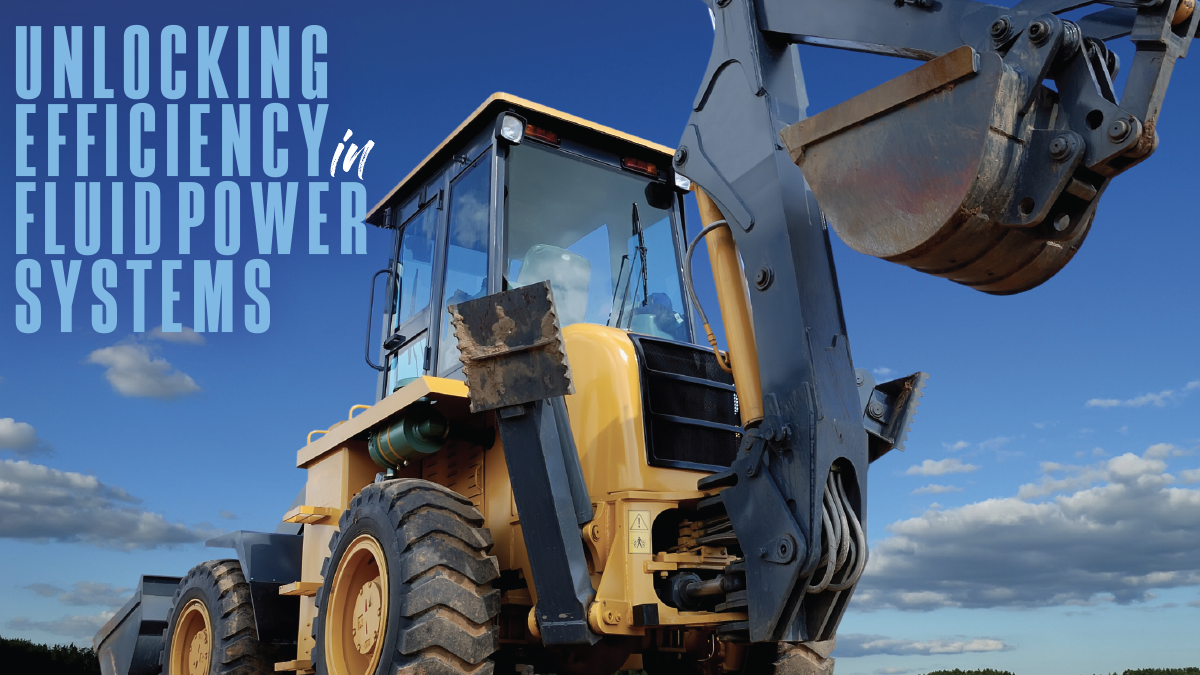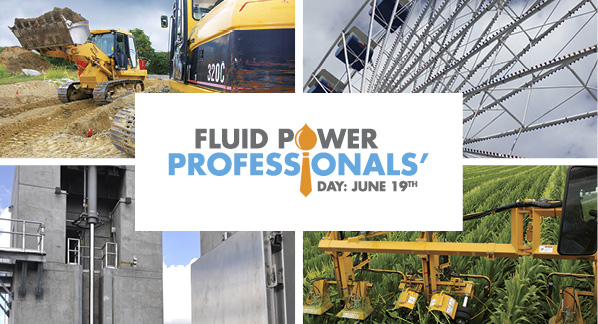Unlocking Efficiency in Fluid Power Systems

Photography courtesy of Parker Hannifin
An Overview of Quick Connect/Disconnect Couplings
By Cameron Koller, Market Development Manager, Quick Coupling Division, Parker Hannifin.
The fluid power industry relies on hydraulics and pneumatics for applications across sectors, ranging from heavy machinery and automotive to construction and general manufacturing. Central to these systems are the connections that keep fluids and gases flowing effectively through hoses and pipes. These are essentially the “veins” within these robust systems.
One crucial component for making, maintaining, and breaking these connections safely and efficiently is the Quick Connect/Disconnect (QDs) coupling. Designed to work with hydraulics, pneumatics, and other fluid systems, QDs bring significant benefits over traditional coupling solutions, particularly for time-sensitive or high-risk applications.
Quick Disconnect vs. Standard Couplings
At a fundamental level, quick connect/disconnect couplings streamline linking hoses and pipes. While standard couplings typically require specific tools and substantial time to attach or detach, quick disconnects allow for a much simpler, tool-free connection and disconnection. This is especially valuable in fluid power applications where equipment needs to be reconfigured, repaired, or transported rapidly.
Standard couplings can allow oil to leak from the lines during disconnection. Conversely, quick-connect couplings achieve connection or disconnection without tools. They reduce fluid leakage in comparison to traditional couplings. Certain QDs allow connection and disconnection while the system runs under pressure.

How Quick Disconnect Couplings Work
Quick disconnect couplings are designed to operate seamlessly in multiple applications, including high-pressure environments, using an internal valving system. Generally, quick disconnects feature two main parts: the plug (male end) and the socket (female end). When connected, the valve opens, allowing fluid and gases to flow freely between components. Upon disconnection, an automatic shut-off valve in the socket end immediately closes, preventing fluid and gas from escaping.
Leak prevention is crucial to system reliability and safety in the fluid power industry; these couplings are built with non-spill designs to limit fluid loss during connection and disconnection. While some QD designs allow for the ability to connect and disconnect when systems are under pressure, all QDs prevent fluid in the lines from leaking out.
Key Benefits of Quick Connect/Disconnect Couplings
Minimizing Downtime: Quick connect/disconnect couplings dramatically reduce the time required to configure fluid systems, allowing operators to quickly swap components or connect equipment without extensive preparations. This advantage is essential in industrial settings, where a few minutes of downtime can translate into significant financial losses. A quick disconnect can expedite maintenance and ensure systems return online as swiftly as possible.
Enhancing Safety and Reducing Contamination: The shut-off mechanism inside QDs is designed to prevent fluid spillage during disconnection. Doing so reduces the risk of accidental exposure to potentially hazardous fluids. This design also limits contamination risks in hydraulic and pneumatic systems, maintaining the purity of fluids and gases and extending equipment life.
Optimizing Pressure Stability: Certain quick-disconnect couplings in hydraulic systems are engineered to withstand high pressures without requiring line depressurization. This feature is valuable in mobile equipment or construction applications, where power lines must be broken and reconnected under intense operating pressures. Operators can rely on these couplings during critical operations to maintain system stability and prevent pressure loss.
Simplifying Equipment Design and Maintenance: Since quick disconnects eliminate the need for tools, the equipment designed to house these couplings can be smaller, lighter, and more modular. This flexibility allows manufacturers to produce streamlined equipment that is easier to repair and maintain, as the quick disconnect feature simplifies the process of accessing individual components.
Real-World Applications in Fluid Power Systems
The versatility and reliability of quick connect/disconnect couplings have cemented their role in numerous fluid power applications. Here are some notable examples where QDs prove essential:
Construction and Heavy Machinery
In construction, machinery such as excavators, bulldozers, and cranes frequently utilize hydraulic systems to handle high-pressure tasks. Quick disconnect couplings enable these machines to connect to various attachments or power sources without requiring complex disassembly. This flexibility reduces downtime on busy work sites and minimizes the risk of spillage, which can lead to equipment contamination or environmental hazards.
Agricultural Equipment
Hydraulic systems play a central role in modern agricultural equipment, powering everything from plows to combines. In farming operations, quick disconnects are invaluable for quickly switching between different hydraulic-powered attachments. This ensures smooth operations during the busy harvest season.
Manufacturing and Factory Automation
In factories where hydraulic and pneumatic systems drive many processes, quick disconnects allow for seamless reconfiguration of assembly lines. As products change or equipment undergoes maintenance, quick disconnects streamline the transition. This keeps downtime to a minimum and keeps production on schedule.
Automotive and Aerospace
Both industries rely on precision engineering and fast retooling capabilities, making quick connect/disconnect couplings essential. In automotive assembly, these couplings allow fluid and air systems to be safely connected and disconnected during testing or component changes. As fluid power systems operate in high-pressure aerospace environments, quick disconnects minimize fluid exposure or contamination risks, protecting both the equipment and personnel.
Quick Disconnect Couplings in High-Pressure Applications
A standout feature of certain quick disconnect couplings in hydraulic systems is their ability to connect and disconnect under pressure without issue. This design capability allows couplings to be connected or disconnected even when the system is under pressure. Fluid power operators can utilize certain QDs to perform maintenance or reconfiguration tasks more efficiently without depressurization, which often involves extensive preparation and substantial fluid loss. In pneumatic systems, quick disconnect couplings with the same feature reduce the risk of leaks and spills by providing a secure and leak-proof connection, even at high flow rates. This is crucial in industries that require the precise and reliable transport of gases or fluids, as maintaining system pressure is essential to performance.
Design Features and Benefits of Modern Quick Connect Couplings
To meet the demands of today’s fluid power industry, manufacturers have engineered QDs with specialized features that enhance their performance and reliability. This includes non-spill valves to prevent fluid spillage during connection/disconnection. Use of corrosion-resistant materials enhance durability in harsh environments. High flow rate capacity supports high-speed operations in demanding applications. Furthermore, broad compatibility accommodates various pressure levels and fluid types, making QDs versatile for use within numerous industries.
Choosing the Right Quick Disconnect Coupling for Fluid Power Applications
When selecting quick-disconnect couplings, it’s essential to assess the specific requirements of each application. Factors such as operating pressure, flow rate, fluid compatibility, and the potential for contamination should guide the choice of coupling. While QDs offer numerous advantages, understanding the operational environment and the fluid properties ensures optimal performance and safety.
As the demand for efficient, reliable, and safe fluid power systems continues to grow, quick connect/disconnect couplings stand out as a critical component in optimizing the performance of hydraulic and pneumatic equipment. Their ability to connect under pressure in many cases, prevent leaks, and simplify maintenance makes them invaluable for modern fluid power applications across diverse industries.
For companies that prioritize efficiency and durability, investing in high-quality quick disconnects can yield long-term benefits, reducing downtime, safety enhancement, and systems integrity. In the competitive world of fluid power, the correct quick disconnect coupling is more than just a convenience. It’s a strategic asset that drives operational success.







